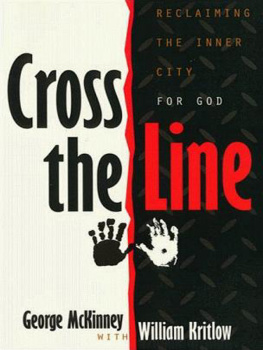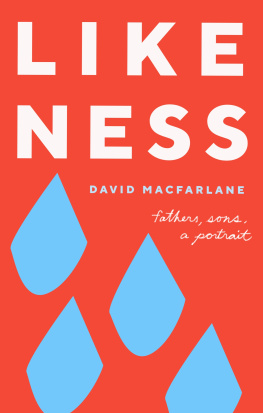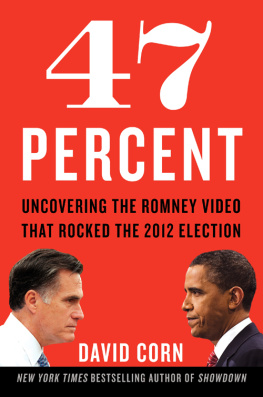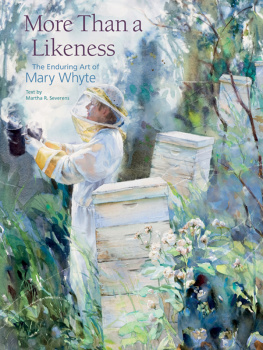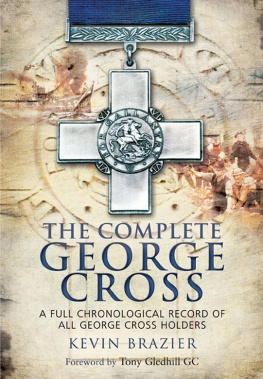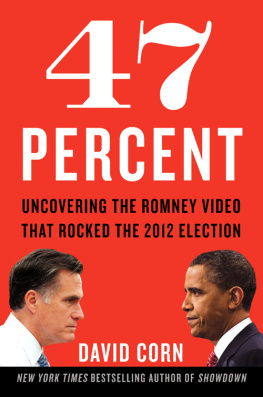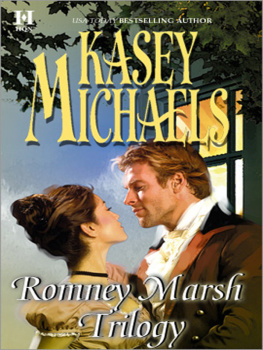First published 2000 by Ashgate Publishing
Reissued 2019 by Routledge
2 Park Square, Milton Park, Abingdon, Oxon OX14 4RN
52 Vanderbilt Avenue, New York, NY 10017
Routledge is an imprint of the Taylor & Francis Group, an informa business
Copyright David A. Cross 2000
The author has asserted his moral rights.
All rights reserved. No part of this book may be reprinted or reproduced or utilised in any form or by any electronic, mechanical, or other means, now known or hereafter invented, including photocopying and recording, or in any information storage or retrieval system, without permission in writing from the publishers.
Notice:
Product or corporate names may be trademarks or registered trademarks, and are used only for identification and explanation without intent to infringe.
Publishers Note
The publisher has gone to great lengths to ensure the quality of this reprint but points out that some imperfections in the original copies may be apparent.
Disclaimer
The publisher has made every effort to trace copyright holders and welcomes correspondence from those they have been unable to contact.
A Library of Congress record exists under LC control number:
Phototypeset in Palatino by Intype London Ltd
ISBN 13: 978-1-138-70499-2 (hbk)
ISBN 13: 978-1-315-20243-3 (ebk)
Although I trained as a scientist to the age of eighteen and as a social scientist to first degree level, numerous people have encouraged me in my exploration of words and images in a great variety of ways. At the age of ten I was introduced to the concept of biography by my first music teacher, the late Margaret Taylor FRCO. While I was at Denstone the late Jack Richards fostered a love of Shakespeare in me, while Barry Trapnell and Hilary Comeau contributed to the genesis of a powerful interest in art, enhanced by a tour of Italy with my late grandfather Colonel Frank Cross of the Royal Welch Fusiliers. Jeffrey Simmons, my agent, suggested biography as a suitable vehicle for my multifarious interests of almost thirty years later, and drew my discussions with Ashgate Publishing to a successful conclusion. On the road to press I have enormously appreciated the experience of Pamela Edwardes, the commissioning editor, who has cheerfully kept me on course; the painstaking labour with chronology and theme of my indefatigable editor Sue Moore, who has considerably improved the fluency of the text; the meticulous work of the copy editor Lindsey Shaw-Miller; the assiduous proof-reading by Elspeth and Martin Orram; and the efforts of all others involved in the production of this biography.
In particular my gratitude is due to four people without whose inspiration and assistance the book would have been neither researched nor completed: Dr William Rollinson, formerly of the Department of Continuing Education, Liverpool University, gave me my first opportunity to lecture in art history and shared his publishing experience; Mary Burkett OBE, former Director of Abbot Hall Art Gallery, Kendal, whose energy led to the purchase of Romneys greatest work, The Gower Children, for the benefit of Cumbria, gave me several crucial contacts in the early stages of my project and generously provided an apartment with staggering views of the Derwent valley, where I spent four fruitful years; Dr Brian Allen of the Paul Mellon Centre for British Art welcomed me to a splendid library, gave much support and advice, read an early version of the text and recommended my eventual publisher; and at an advanced stage Alex Kidson of the Walker Art Gallery, Liverpool, carefully read the text twice, locating several weaknesses, and assisted greatly with the proofs, while his enthusiasm for Romney sustained me through several dark periods.
The endeavours of my distant predecessors in Romney studies proved an inestimable benefit whilst more contemporary Romney scholars who have earned my sincere thanks include Professor Anne Crookshank of Trinity College, Dublin, who generously gave me a huge collection of photographs, and Patricia Jaff for her superb Fitzwilliam catalogue. Since the inception of the project my warm appreciation must be accorded to Dr Yvonne Romney Dixon of Trinity College, Washington, for her lively correspondence and memorable hospitality; Jennifer Watson for her excellent Canadian catalogue which provided numerous scholarly leads; Professor Victor Chan of the University of Alberta for kindly sending a copy of his PhD; Elizabeth Allen of Muswell Hill for several enlightening conversations; Jean Wallis, an MA student at Reading, whose insights will become important to Romney scholarship; and the late Sarah Cookson, an able A level student who tragically died before she could complete her project on Romney.
Facilities for research were provided by Dr Charles Saumarez Smith, Director of the National Portrait Gallery, and his staff; Lindsay Stain ton and her former colleagues at the Department of Prints and Drawings, The British Museum; the staff of the National Art Library, The Victoria and Albert Museum; the staff of the Witt Library and the Photographic Survey, The Courtauld Institute, especially Jane Cunningham and Sarah Wimbush; Jane Munro of the Fitzwilliam Museum; Vicky Slowe, former Director of Abbot Hall Art Gallery and now Director of the Ruskin Museum, Coniston; and Edward King, Philip Dalziel and Christian Barnes of Abbot Hall Art Gallery. It has been a privilege to visit Romneys surviving houses and I am grateful to the owners who kindly gave me access to these significant places.
Although they are already named in my bibliography, I am enormously grateful to numerous scholars whose books and articles I have cited; also to curators, librarians, archivists and fellow researchers all over the world who have responded to legions of queries and frequently sent relevant unsolicited information. In particular I must thank the following: Patrick Noon and his colleagues at the Yale Center for British Art, New Haven; Pierre Rosenberg and his staff at the Muse du Louvre, Paris; Karen Hearn and Elizabeth Einberg of the Tate Gallery; Alastair Laing of the National Trust; the staff of the Paul Mellon Centre for British Art; Helen Valentine of the Royal Academy library; Peter van der Merwe of the National Maritime Museum; the staff of the Museum of London; Elizabeth Knight of the Cowper and Newton Museum, Olney; Nigel Viney for locating several elusive portraits; Stephen Freeth of the Guildhall Library; Thelma Goodman of Lancaster University Library; Richard Hall of Kendal Record Office; Aidan Jones of Barrow-in-Furness Record Office; Stephen White of Carlisle Reference Library; Ron Smith of Barrow-in-Furness Reference Library; Christine Strickland and Jackie Fay of Kendal Reference Library; and Joan Sharpe and Sue Harris of Cockermouth Library who arranged for numerous inter-library loans.
In accumulating a collection of photographs of Romney paintings and drawings I am in debt to many institutions, to private owners and to Barrow Arts Panel who gave me a photographic grant. James Miller, David Moore-Gwyn and the staff at Sothebys, Margie Christian and the staff at Christies and Lowell Libson and David Posnett of the Leger Gallery (now Spink-Leger) have been unfailingly helpful and generous in providing prints. Warm thanks go to the owners who have given permission for their paintings to be reproduced; the names of those not seeking anonymity are printed in the list of illustrations or in brackets after references in the text. Furthermore, I acknowledge the expertise of numerous photographers, known and unknown, including Steve Thomas, George M. Garbutt, John Spragg, Jeremy Whittaker and Beaver Photography, Chichester; and the technical and computing skills of Leslie Leak in Kendal and Matthew and David of Astra Printing in Barrow, when my own computer system failed.





